Hisense 100L5 Laser TV
One-minute review
The Hisense 100L5 isn’t exactly your average TV. This much becomes obvious as soon as you clock the fact that it gives you a massive 100-inch screen for less money than many regular 75-inch TVs.
The main reason it can offer so many inches for your buck is that it’s not strictly speaking a TV. Rather it’s an ultra-short throw projector combined with a rigid 100-inch projection screen that’s designed to reject ambient light, so that you don’t have to black your room out every time you want to watch it.
The projector is a DLP affair illuminated by laser lighting, meaning that it can go brighter and reach a wider range of colors than regular lamp projectors. It also won’t need its laser replacing in the course of its lifetime unlike lamp projectors, and also unlike regular projectors can be switched on more or less immediately, without significant warmup or cooldown time.
It goes beyond most regular projectors, too, by carrying both a tuner and a built-in smart TV system, complete with many of the key streaming apps.
All of this fits perfectly with the 100L5’s bid to feel more like a TV than a projector. The amount of brightness and color it can retain on its specially designed screen even with the lights on or the curtains open really is striking. It manages to give 4K sources a pretty convincing 4K look, too, despite not being a true pixel for pixel 4K projector.
With a speaker system cleverly built into the projector’s rear edge also sounding good enough to outgun most TV audio systems, the only major catch with the 100L5 for its money is that it doesn’t have the contrast to adapt convincingly to dark home theatre conditions.
Price and availability
- The Hisense Laser TV range is available in 100 inch size
- The 100L5 costs AED 19,999
- Optional customizing with frame and cabinet also available
Hisense has really started to get its market localization act together in recent times, so it’s no longer surprising to find even a relatively esoteric and expensive AV product like the 100L5 now widely available across the globe.
Much more surprising is how affordable the 100L5 is versus a regular 100-inch LCD TV. This sort of bang for your buck is certain to turn heads, and has doubtless played a big part in Hisense being able to get its latest ‘Laser TV’ proposition into mainstream retailers all over the world, despite the potential difficulties associated with exhibiting and installing such a unique product.
If you want the 100L5 to really blend into your space, Hisense also offers a customization packaged, priced at AED 8,000. This gets you a very slick system with a framed rollable image that covers the screen when not in use (any high-res image you can provide, or a choice of pre-selected artwork), as well as a modern cabinet with retractable drawer where the projector sits. Simply turn on the projector and the entire things comes to life, with the screen rolling away automatically and the projector sliding into place.
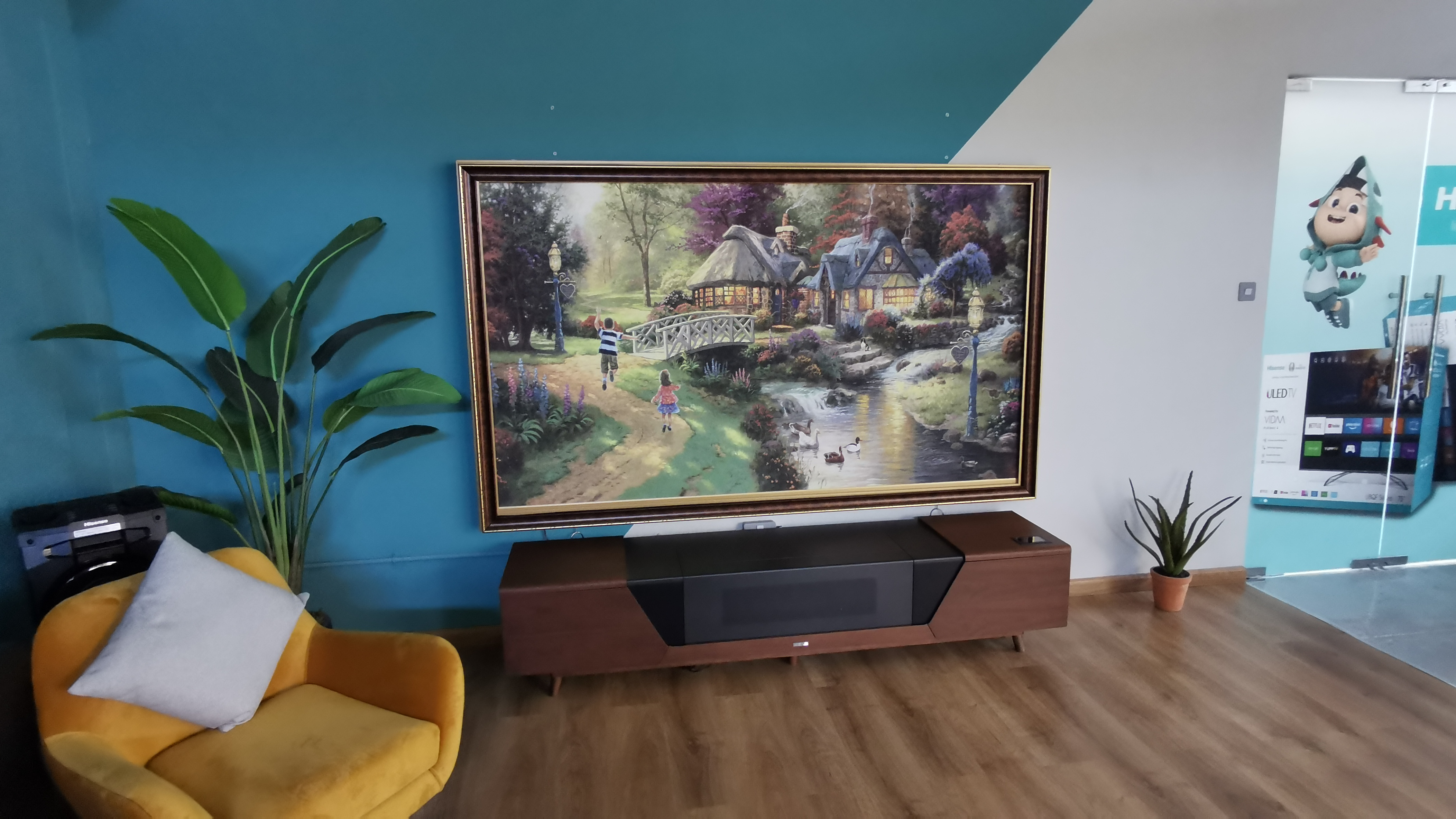
Design
- Rigid 100-inch screen fits to your wall
- Ultra short throw projector sits just inches from the screen
- Incorporates a powerful speaker system into its rear edge
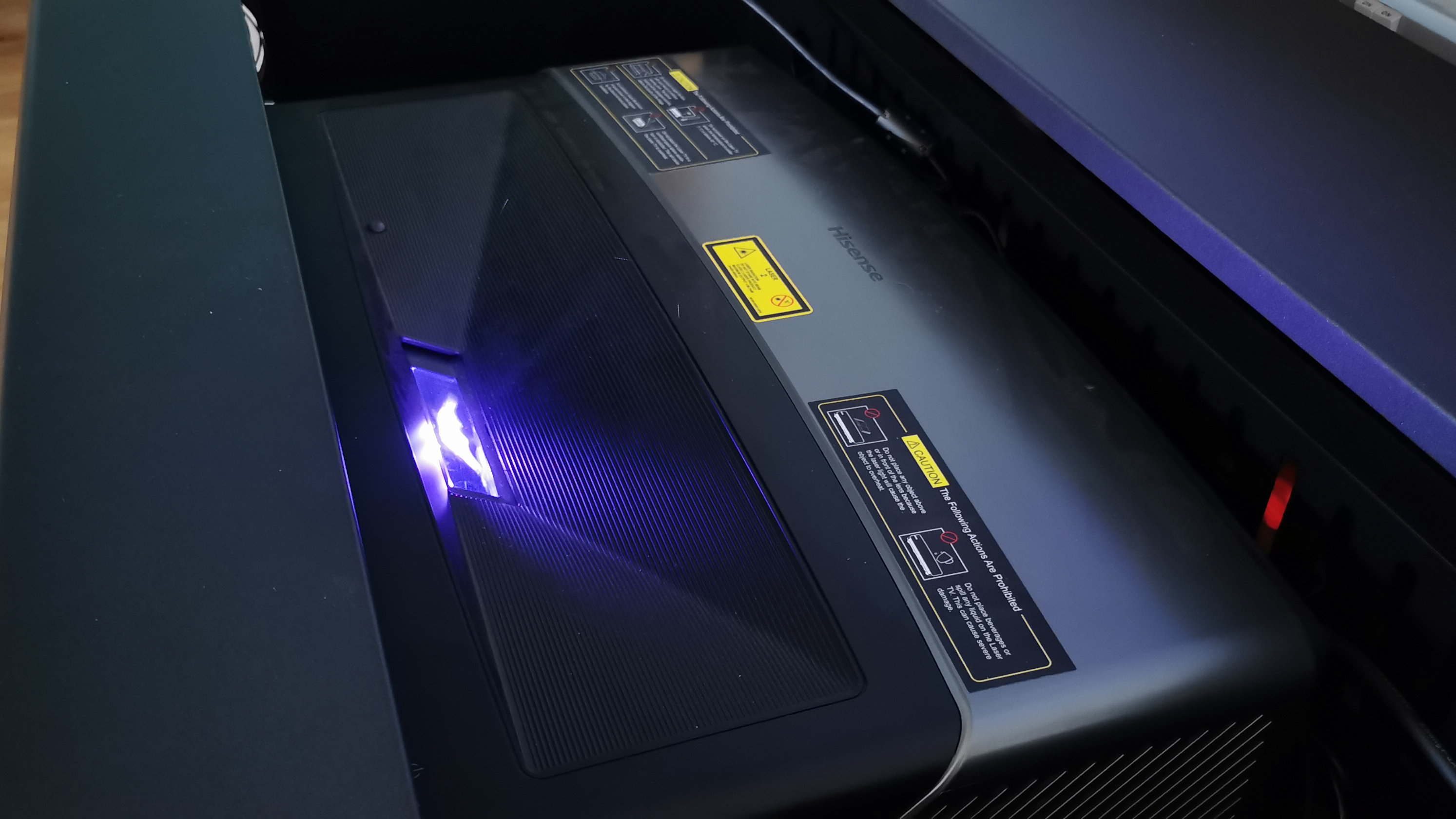
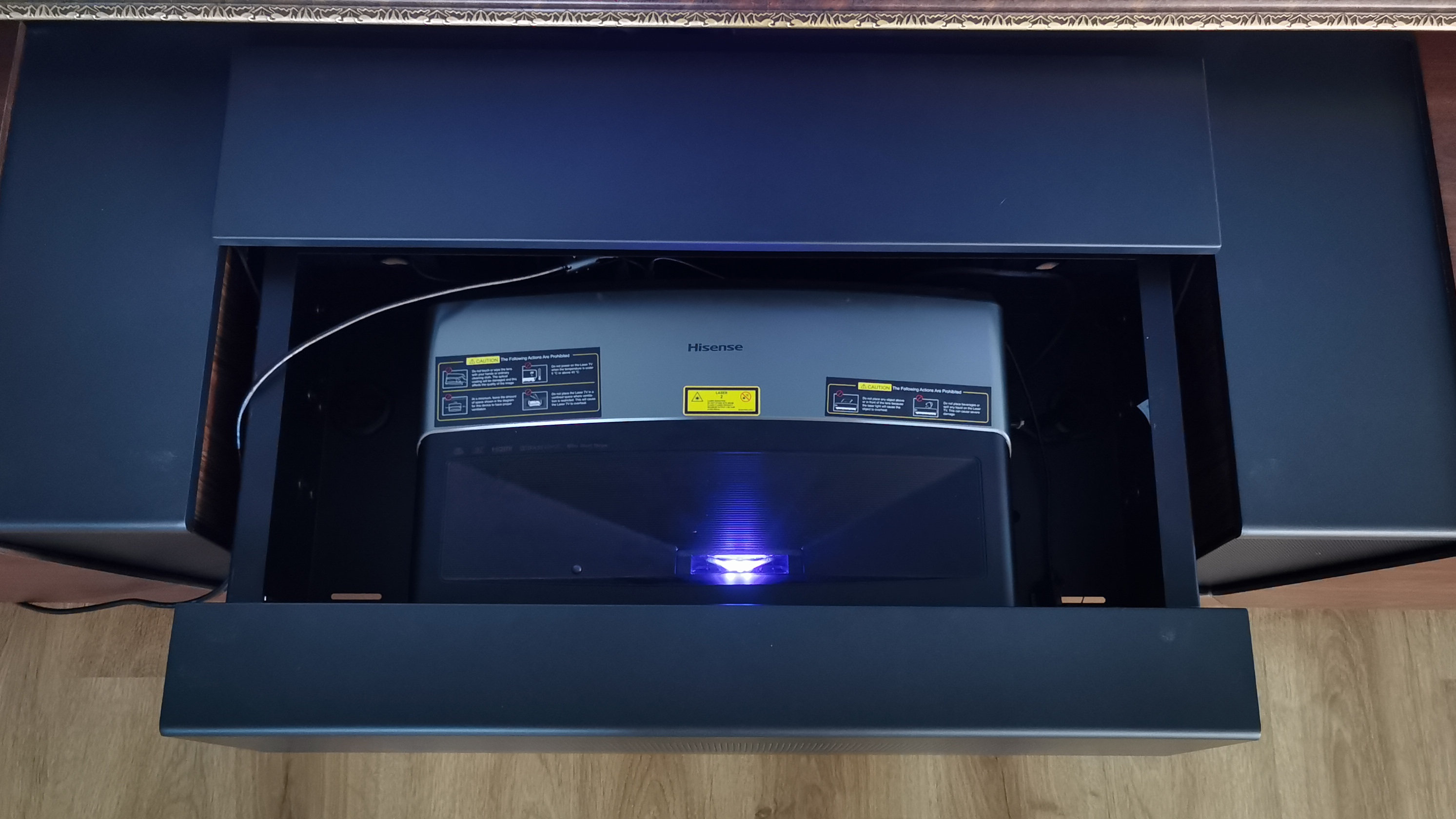
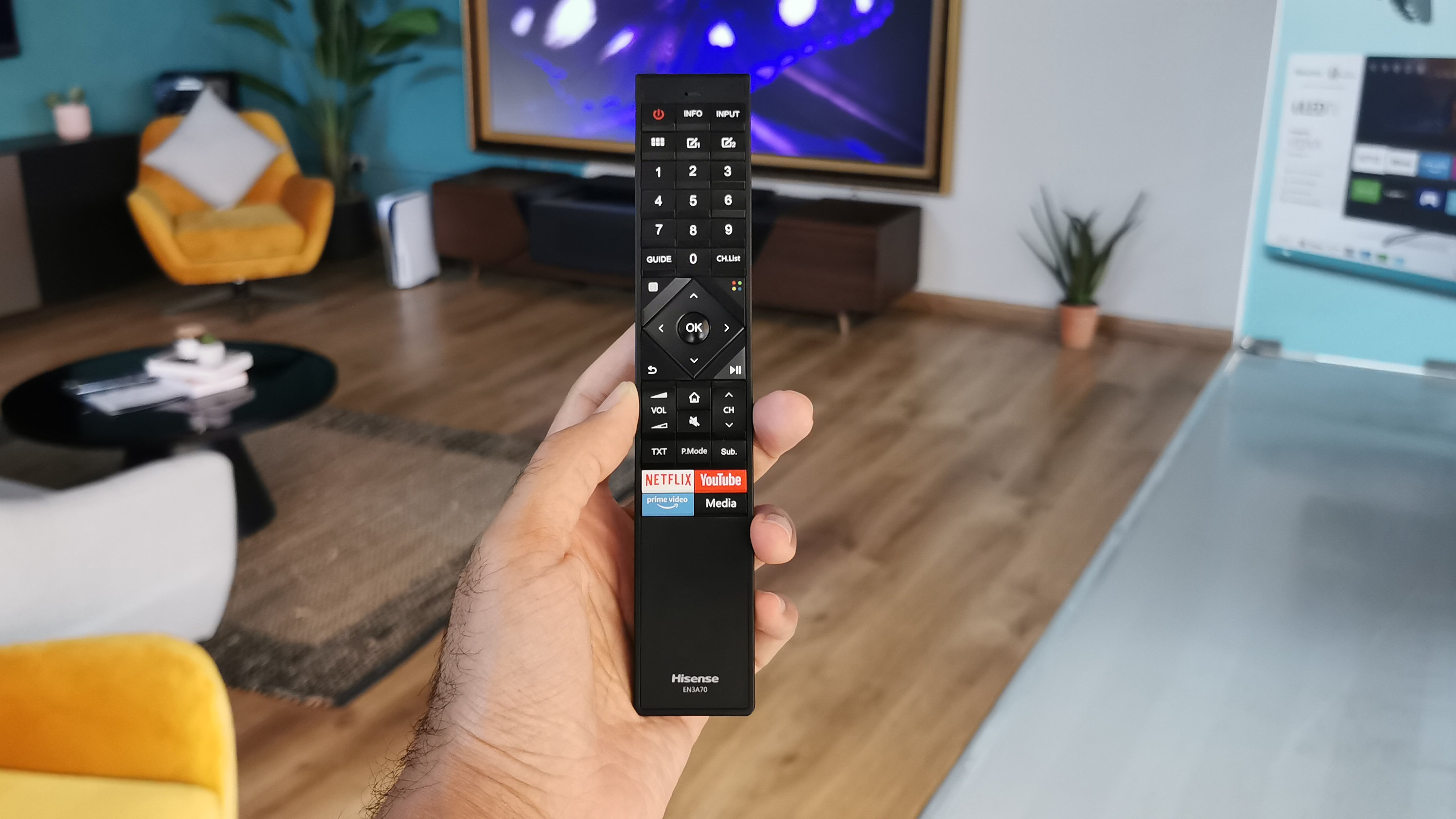
Since it ships in two parts - the projector and the screen - the 100L5 is a bit more of an imposition on your room than a straight 100-inch TV would be. That said, the screen is slimmer than most LCD TVs, while the projector really can sit almost within touching distance of your wall. So there certainly isn’t the usual projection issue whereby the projector has to sit in the middle of your room or near your seating position.
The projector is fairly large, as usual for an ultra-short throw design. There needs to be some room, after all, for light to bounce around inside the unit before emerging through the slit on the projector’s top edge. It wears its size well, though, thanks to a silver and grey two-tone design and rear-mounted, felt-covered speaker section. Given that the projector sits right up against your wall, this rear section is actually the part of the projector that’s most visible from your seating position.
The 100L5 carries a sensor that can turn the laser off if it detects anyone starting to lean over the image aperture, so that nobody gets blinded.
Ultra short throw laser projector systems can be fiddly to install, as it’s more difficult than it is with regular projectors to get the image positioned and focused perfectly on the companion screen. However, while Hisense has tried to make installation easier thanks to an autoinstall app that fine tunes the picture based on a simple photograph of your image taken on your phone, impressively the brand is also running a free home installation service with every 100L5 it sells. You just have to register your purchase online and book an appointment for the installation to take place. This makes the 100L5’s price look even better value.
Connections on the 100L5’s projector include four HDMIs - the same number you’d expect to see on a TV, and two more than you normally find on a projector. None of the HDMIs are made to the 2.1 standard, though, so there’s no support for 4K at 120Hz, variable refresh rates or eARC. Regular ARC (audio return channel) is supported, though, and there are also a pair of USB inputs for multimedia file playback, an optical digital audio output, a headphone jack, and both Ethernet and Wi-Fi network options.
Many of these connections are again not things you would expect to find on a projector, but would very much expect on a TV. As is the most unexpected connection discovery of all: an RF port for a built in digital TV tuner.
Smart TV (VIDAA)
Although Hisense isn’t adverse to using Android TV or Roku TV smart platforms on its TVs, for the Laser TV it’s opted to use its own VIDAA system. This has some upsides and some downsides.
On the upside, VIDAA works impressively slickly. You can navigate around its simple, icon-driven menus with no sluggishness, and apps boot and update unobtrusively.
Hisense has deals in place with many of the big streaming players - most notably Netflix, Amazon Prime Video, and YouTube.
The VIDAA system isn’t as sophisticated in some ways as the best rival smart TV platforms. There’s no real effort to learn your viewing habits and automatically build a ‘bespoke’ content recommendation system, for instance, and nor is there any voice recognition support. But I suspect that for many users VIDAA’s simplicity will actually be very welcome.
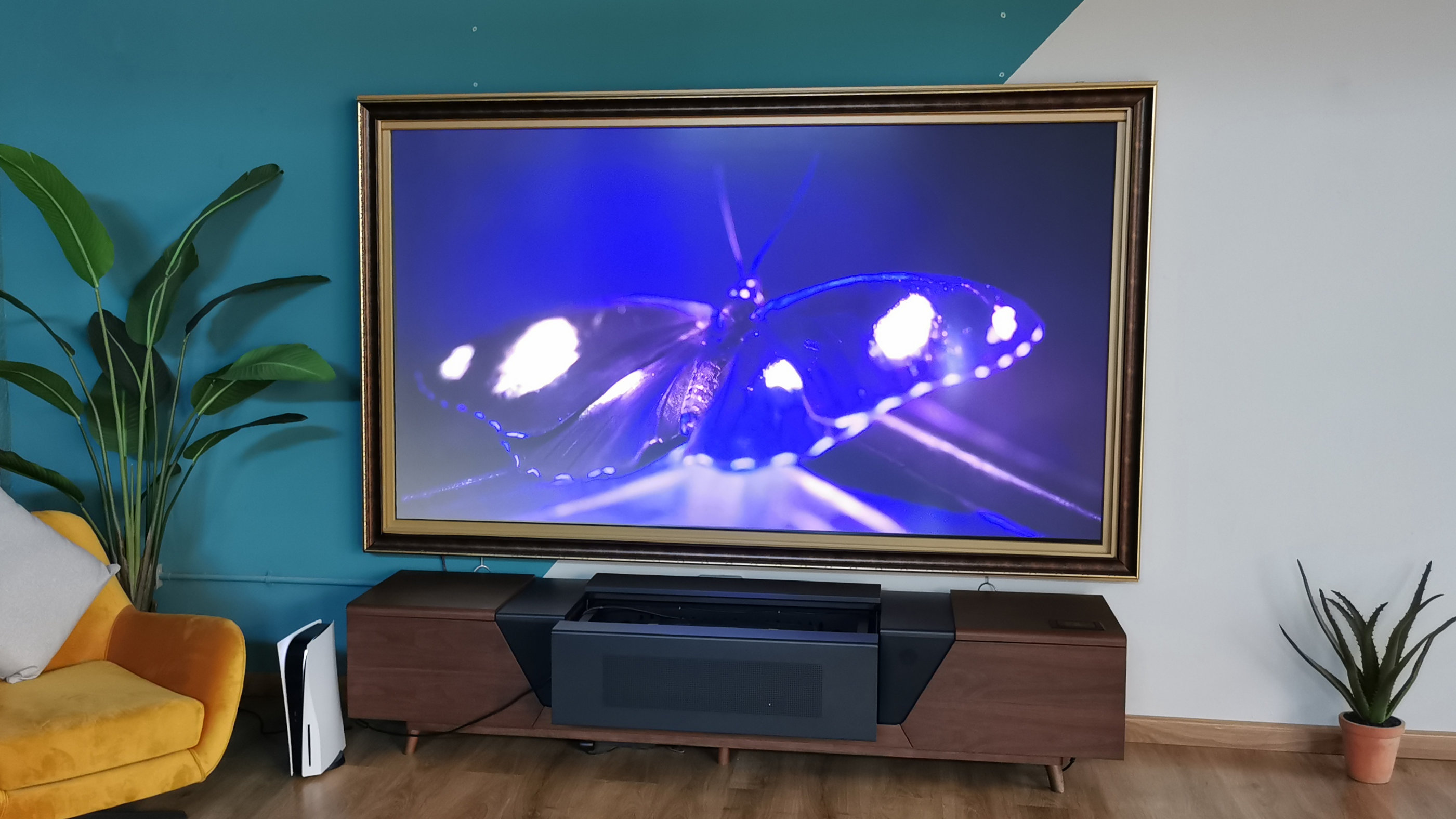
Picture quality
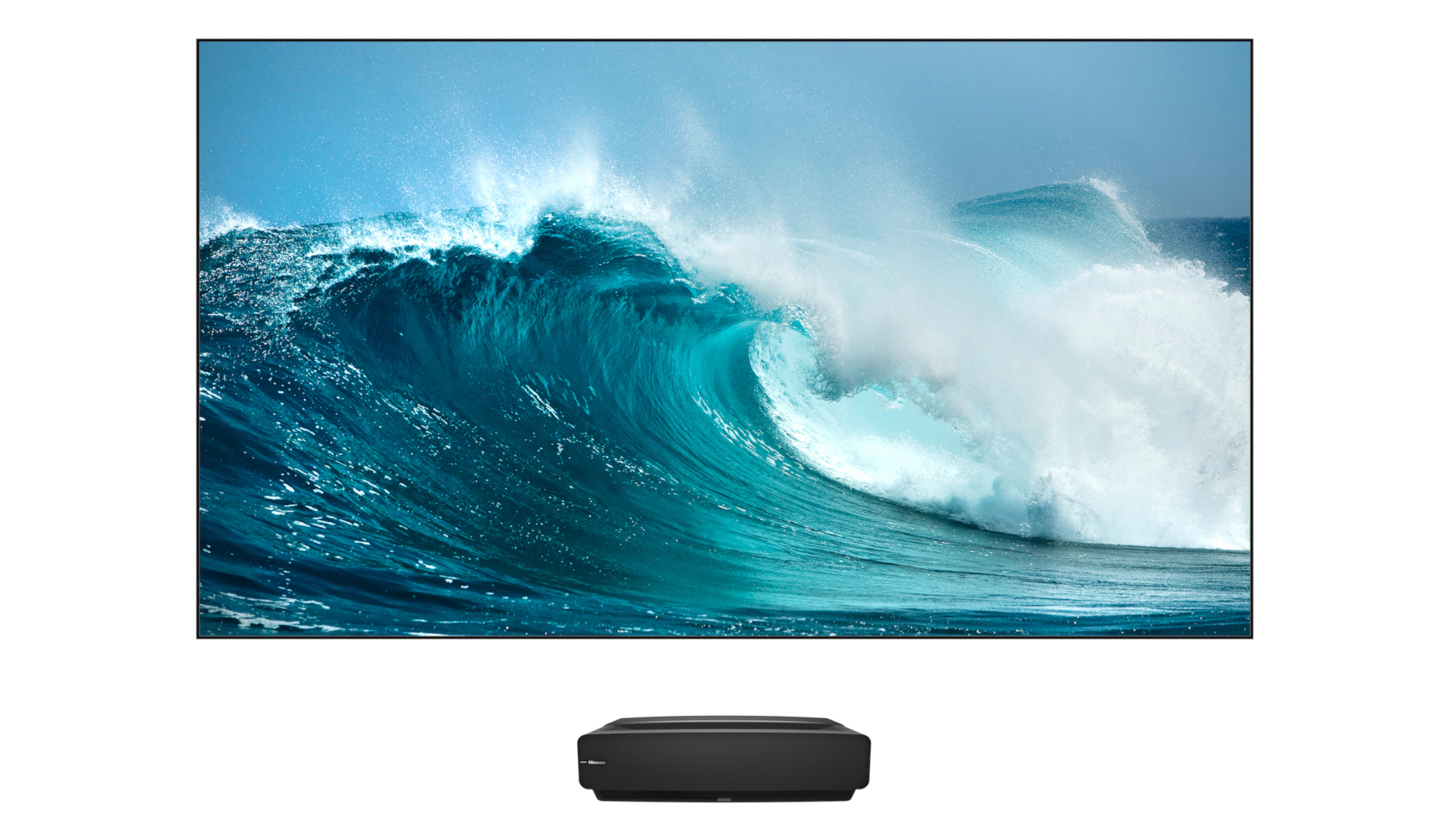
Screen sizes: 100 inches | Tuner: Freeview HD | 8K: No | HDR: Yes | Projector technology: DLP laser | Smart TV: VIDAA | Native resolution: 4K (pseudo) | 3D: No | Inputs: 4xHDMI (all v2.1), 3xUSB, RF input, optical digital audio, CI slot, headphone output, Ethernet, RF port
Deliberately starting our tests by running the 100L5 in regular living room conditions rather than the sort of fully blacked out room usually needed for projector testing, first impressions of the Hisense 100L5’s pictures are seriously striking.
The projector’s high, laser-inspired brightness combined with the gain of the screen and the short distance the projector’s light needs to travel before it reaches the screen results in a picture you really can still enjoy even when there’s a significant amount of ambient light in your room. Bright images still look punchy and vibrant, with surprisingly full-blooded colors and a level of eye-catching intensity that projectors just aren’t supposed to be able to manage in a light room.
The brightness is matched by an impressively wide color gamut too, helping the 100L5 avoid the pallid, washed out colors you usually see when you try to watch projectors in bright rooms.
As well as making the 100L5’s pictures exceptionally watchable in bright conditions, its combination of high brightness and wide color range helps it produce some of the most effective, convincing high dynamic range (HDR) pictures we’ve seen from a projector to date. As usual where a projector is involved, there’s no support for the Dolby Vision or HDR10+ active HDR systems, but Hisense’s processing handles the more basic HDR10 and HLG systems well enough.
So rich and bright are the lightest parts of the 100L5’s pictures that they manage to make dark areas look convincing too. This sense that the 100L5 can deliver good black levels is, it turns out, something of an illusion created by the system’s combination of high brightness, vibrant colors and the light-rejecting qualities of the screen. But as illusions go, it’s a good one.
The way the provided screen uses a lenticular surface structure to keep ambient light from interfering with the picture is one of those ‘you need to see it to believe it’ AV success stories. It's hard to believe Hisense’s claims that the screen can reject more than 90% of ambient light, but it certainly works well enough to align with the 100L5’s desire to be seen as more of a big-screen TV than a projector.
The 100L5’s pictures are crisp and sharp, too, despite the difficulties associated with achieving immaculate focus and geometry on an ultra short throw projector. Native HD sources are upscaled very tidily, gaining extra density and sharpness without exaggerating source noise. Even better, native 4K sources really do look like they’ve got four times as many pixels in them as HD images - despite the single-chip DLP optics the projector uses not actually delivering a native 4K pixel count.
The so-called double flashing system the 100L5 uses to create a 4K effect is actually ratified by the Consumer Technology Association (CTA) as being capable of delivering a true 4K experience. And while the results are quite a match in their immediacy and clarity for Sony and JVC’s latest native 4K projectors, they’re plenty good enough for a projector/screen system that’s giving you so much for so little cash.
Our final test was with a PlayStation 5 connected, and while games generally looked great color-wise and played beautifully, we missed seeing the high framerates that we know the PS5 can deliver. For gamers who aren't bothered about 4k at 120fps gameplay, you'll be fine here.
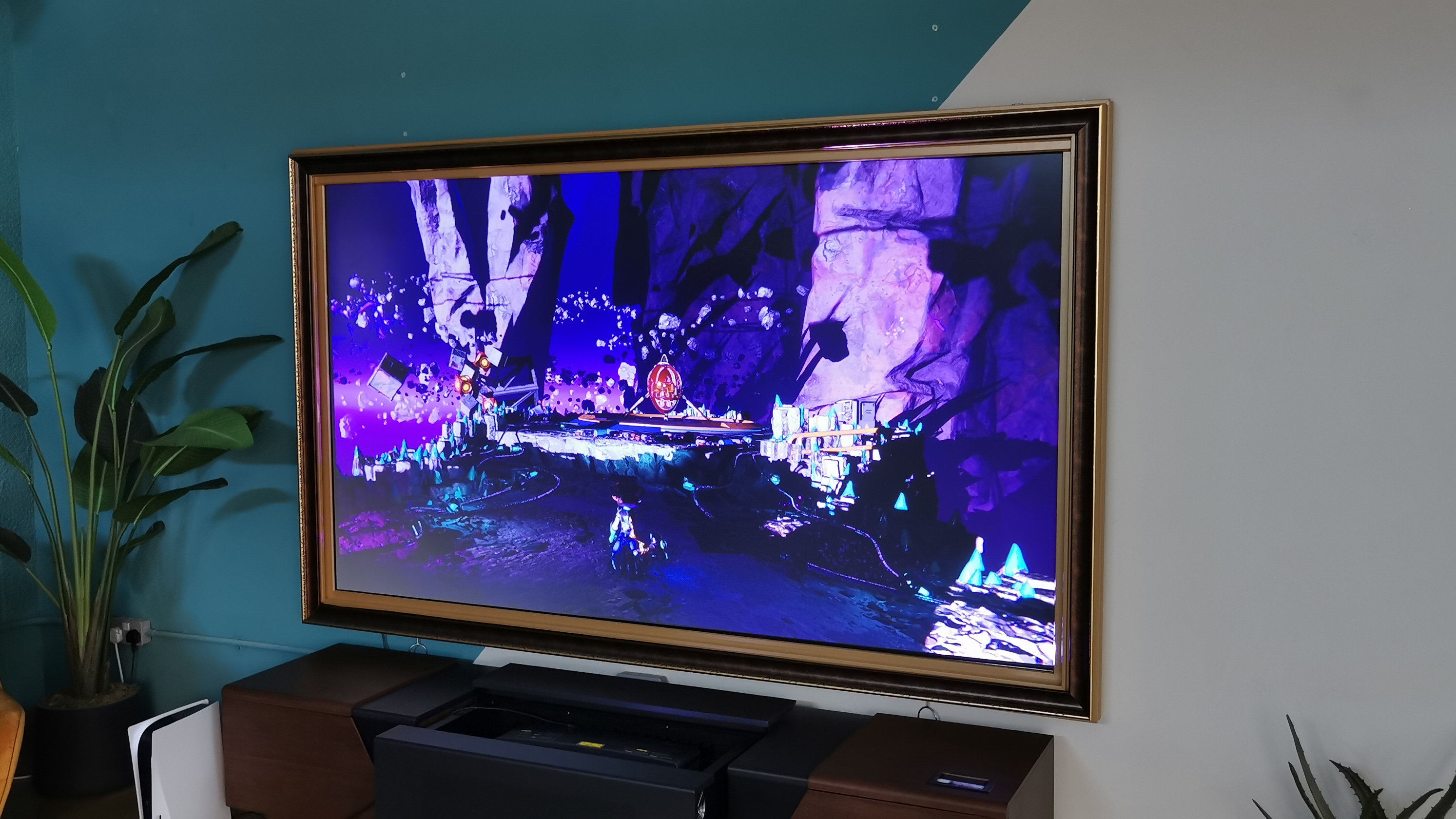
Good though the 100L5’s performance is in regular living room conditions, there are a few relatively small niggles. The intensity of the 100L5’s images drops off a bit, for instance, if you have to watch the screen from much of an angle. I occasionally felt aware of a small, faint ‘hotspot’ of brightness towards the bottom center of the image, too, and every now and then there’s a fleeting example of the rainbow effect, where bright, stand-out parts of the image can be accompanied by fleeting stripes of pure red, green and blue. The rainbowing is actually pretty subtle by DLP projector standards, though - especially for a projector that runs as bright as the 100L5 does.
One other complaint with the 100L5’s regular living room performance is that as with previous Laser TVs, Hisense’s picture presets aren’t particularly helpful. The HDR Dynamic setting is the only out of the box option that delivers really punchy, bold colors; the rest can all look a bit insipid. Yet at the same time the Dynamic mode can come on a bit too strong for serious dark room movie nights, and can cause bright HDR areas to ‘clip’ (lose subtle shading information).
The tools are there to tweak the Dynamic setting to rein in its most aggressive traits when you’re watching in a dark room, but it would have been nice if, say, the Standard preset had been created with a little more punch, to give you a better mid-point between the more accurate but also slightly drab HDR Night setting.
If you really want to get the best out of a Hisense 100L5, you’re probably best factoring a professional calibration into what will still add up to be a very reasonable overall price.
The final and worst issue with the Hisense 100L5’s pictures appears when you attempt to switch from a bright room to a dark one for a proper movie night. Suddenly, without ambient light to help hide the black level issues, very dark scenes and dark areas of otherwise bright images can start to look distinctly flat and grey, as well as rather hollow and short of shadow detail. And we didn’t find any way of really calibrating around this black level issue.
Audio performance
This is another area where the Hisense 100L5 does a convincing job of persuading you that it’s more TV than projector. For starters, the speakers are startlingly powerful. Its 2x15W of rated power proves enough in conjunction with the projector’s robust design to deliver a potent, dynamic and usually well rounded sound free of distortions caused by either the drivers or the projector’s bodywork.
What’s more, since the speakers are placed on the projector’s rear, facing out into your room, the sound feels nice and direct, immersively filling your room.
The sound’s directness means hard effects such as gun fire and explosions have plenty of impact, and best of all the sound spreads far and wide in all directions, creating a soundstage that matches the scale of the 100-inch images. The soundstage even has a sense of height as well as width, backing up the projector’s built-in Dolby Atmos decoding surprisingly well.
This verticality to the 100L5’s audio helps it largely avoid the common ultra short throw projector problem where voices seem to be coming from below the onscreen action.
The Hisense 100L5’s compact form doesn’t provide much space for a serious subwoofer, so it’s not entirely surprising to find that the weakest element of the 100L5’s sound is its bass. Dense movie mixes, explosions, heavyweight collisions and so on lack low-end heft, leaving them sounding slightly brittle and lop-sided. So much so that the occasional really shrill sound can hit your ears quite harshly.
There is good news here, though, in that the 100L5 allows you to add an external subwoofer via Bluetooth. Even without one, though, overall the 100L5’s sound is better than that of many of this year’s LCD and OLED TV releases.
Should I buy the Hisense 100L5 Laser TV?

Buy it if…
You want a huge screen for a budget price
Even if you can find a regular 100-inch TV, it will cost you an arm and a leg. If not both arms and both legs. Hisense’s clever UST projector solution gives you a 100-inch picture in a TV-like configuration, though, for less money than many 75-inch TVs.
You don’t like blacking out your room
The 100L5’s high reflection/ambient light rejecting screen can deliver pictures bright and colorful enough to still be enjoyable from the projector even in regular daytime living room conditions.
You don’t want the projector to dominate your room
Using an ultra short throw projector means you can get the image size best achieved from a projector without the inconvenience of a projector having to sit in the middle of your room. Throw in some extra cash for the custom kit and you'll have an art piece hanging in your living room.
Don’t buy it if…
You're into serious movie nights
The 100L5’s black level shortcomings are hard to ignore if you decide to black your room out for a cinema-like experience.
You want the latest gaming features
While it convincingly pretends to be a TV, the 100L5 is actually a projector system. And like all projector systems currently, it doesn’t support the latest game feature of 4K at 120Hz, variable refresh rates and auto game mode switching.
Your TV needs to go into a corner
Unless you’re prepared to invest in some sort of huge mounting rig for the 100L5’s screen, it has to be mounted on a flat wall. You can’t put it in a corner.
- Looking for the latest and greatest beamers? Check out our guide to the best projectors
0 comments:
Post a Comment